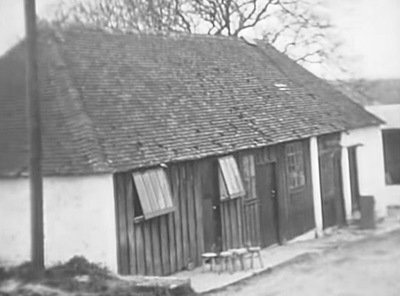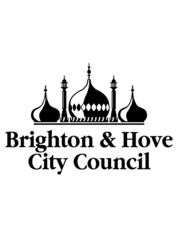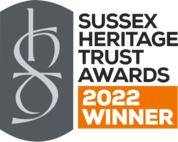Champagne, Effervescents Du Monde, and Burgundy trip 2014
Published on 2 January 2015
00:00 - 00:00
On the 17th of November, ten keen students climbed aboard the skylark (luxury minibus) provided by the college and set out on a journey of education of learning about fine wine. The main objective of the trip was to judge at the Effervescents Du Monde, an international sparkling wine competition held in Dijon, France. For many of us it was to be our first experience of professional wine judging.
From Plumpton College it was two hours to the Eurotunnel and a further four hours to Reims, capital of the Champagne region of France. Arriving late, there was just time for a few trappist beers, after which we had an early night in preparation for the morning’s visit.
By George Turner – 2nd year BSc Viticulture & Oenology student
Champagne Vincent Couche – A boutique Biodynamic wine producer
In the cellars with Vincent Couche
After a night in Reims, we travelled south to Buxeuil in the Aube department of Champagne to visit Vincent Couche’s winery. Aube is based along the Aube River and is separated from the main body of the Champagne region. Vincent Couche is a Biodynamic and natural Champagne winemaker. We were lucky in that we turned up shortly after he had done a tasting, so were treated to 13 of his Champagnes. A particular stand-out was a ‘Perle de Nacre’ blanc de blanc, made from grapes picked in 2002, 2003 and 2004 that had spent 10 years on lees. We were also treated to two still wines from Chablis, that he had made in bonbonnes (large glass bottles), with grapes picked from premier cru sites that were also biodynamically farmed and had undergone natural ferments. The Champagne range was very diverse, and included many Pinot noir-dominate wines, plus others that had undergone barrel maturation or carbonic maceration, and finally some with zero dosage. After the tasting, we were led into the cellar where we saw bottles and barrels maturing. Some members of the group were also able to try an interesting eau de vie that Vincent makes as part of his zero waste policy. This high-strength alcohol made from left-over grape skins will be used to fortify the pressings juice not suitable for Champagne production and sold as Ratafia de Champagne. All in all, the group left pretty enlightened about the natural winemaking process, as well as a little merry, and enjoyed meeting the eclectic figure behind the wines
By Chris Sherry – 2nd year FdSc Wine Production
Group ESC Dijon Bourgogne – Burgundy Business School

Simon Stockton (left), Winner of the Wilson-Milanowski Cup
On the first night, we arranged to meet our French equivalents from the MSc Wine Business (ESC Dijon) at, interestingly, Le Bronx, an Italian wine bar. After introductions, we offered them a taste of our fresh 2014 vintage (barrel sample) of Plumpton Estate Morgan’s reserve and Perrins Block Pinot noir précoce. This gave the Plumpton students a chance to mingle with our counterparts and discuss the wine.
After these niceties, it was a matter of serious business: the 3rd annual Wilson-Milanowski Trophy Challenge. Plumpton had not been able to bring the trophy home for the last two years, so this year, we were determined that we were walking out of the wine bar with the trophy held aloft. We each partnered with a MSc. student for the blind tasting competition. It was a red wine; we all passed on that one. For the first round, 6 questions were called out and we marked down our answers. Those with the most correct answers would pass to the next round. These were one Plumptonite, Simon Stockton, and one ESC student, Oskari Kaikkonen. We held our breath as the head-to-head round proceeded. Finally the result was that Plumpton had won! The return of the Wilson-Milanowski cup was secured.
We continued the evening with platters of cheese, cured meats and mini-burger sliders! We mingled a little more with our counterparts, exchanged twitter ID’s and took our leave. Dinner beckoned and we made our way to a small café/bistro, which was nicely decorated with shades of pink (Tony’s choice). We had a delicious meal and shared bottles of Burgundy Givry 1er Cru and Fixin. The dessert of the evening was the Café Gourmand – a trio of espresso, chocolate mousse and a meringue lemon custard tartlet. Highly recommended! A good end to an eventful day.
By Ciara Wong – 2nd year FdA Wine Business
Effervescents du Monde – International sparkling wine competition

Judging the Effervescents du Monde
As we walked into the Lycée Castel, the venue for judging, each one of us was amazed by the grand building of the hospitality centre. Like a classic French château, it stood apart from the concrete monstrosities that surrounded it. The Effervescents du Monde competition has been running for 12 years; it’s sole purpose to blind-taste sparkling wines and award them gold, silver, bronze or no ranking at all. The tasting looks not only at grading the sparkling aspects of the wine, but also at incorporating defining qualities and faults in the wines.
On our first day we walked into the hospitality centre, dropped of our bags and coats, and received our badges. We then proceeded to meet the other judges and lingered around whilst being called into our groups. The sommeliers were all suited and booted, and lined up and took us through to the tasting room, where each judge had individual tables complete with wine glasses, a spittoon, bread, and the all-important marking sheets. We tasted two flights of ten wines in the morning with a short break in between for refreshments.
The tasting started with a palate cleanser wine, then they proceeded to bring the first of the sparkling wines. First the wine number was announced, then the wine would then be poured into the observation glass. The sommeliers then worked their way around to each of the judges, pouring samples and returning with the observation glass for us all to inspect the wine’s aspect and mousse. Slowly and steadily we filled out the rest of the sheet, marking on the visual, nose, palate and harmony of the wine. At first, we were all a bit worried and unsure about going from our Plumpton training to official judging. However, as judging progressed, our confidence grew and we our performance improved.
After all 20 wines had been judged, we were allowed to see what wines we had tasted that morning and discuss our thoughts with other judges on the wines. Once we finished re-tasting the wines, we were then called into the catering section of the college where we got treated to a three-course lunch with wine and petit fours served by the catering students. Memories flowed back to me of when I was once a hospitality student in their very same shoes. After the long leisurely lunch, we were free to experience more of the region and its wines. However, we still had to endure another two days of sparkling wine tasting competition and a repeat of a three-course lunch. It was a hard life but we Plumpton students pulled through.
By Sarah Collis – 2nd year FdA Wine Business
Judges’ Dinner with Domaine Famille Picard – Grand Burgundian négociant

Cellars of Cha^teau de Chassagne-Montrachet
After our second day of judging, with our palates feeling tender from the sparkling wine, we were whisked away by minibus to the Compagnie Vinicole de Bourgogne, which trades in over 2000 products ranging from crémants, tables wines, wine cocktails, spirits and even Scotch whisky. Donning on white protective overalls, we started our tour. First up was the vast spark-free room were all the high-ethanol products were stored. We whizzed past the laboratory, which was host to three full-time oenologists, who were responsible for testing all the different products packaged on-site.
The next stop was at the packaging machinery, were their pamplemousse (grapefruit) rose cocktail was being packing into bag-in-box for sale in the hypermarkets of France. The complex was daunting, with around 300 tanks which averaging 100 hL each, plus they had 2 large distribution warehouses, which stored all their myriad of product lines. We even toured their downstairs cellar, where some of the Picard family’s famous grand cru and premier cru vineyards’ wines were maturing.
With our stomachs barely rumbling from our earlier three-course lunch, we arrived at the judges’ dinner, which was hosted by Picard in the famous Cha^teau de Chassagne-Montrachet. We were greeted by a glass of Voarick (crémant de Bourgogne, a gold medal winner from the 2013 Effervescent du Monde competition), and canapés of gougères, a delicious Burgundian cheese profiterole. We were then ushered down to the cellars, where many oak barriques and foudres full of Burgundy wines were being matured. At the end of the cellar we walked into the spectacular dining room, dimly lit with candelabras. It was a magical venue. Again we got to enjoy the local wines, including a Premier Cru Rully 2010, Saint Aubin Premier Cru 2009, several Beaujolais Nouveaus, and a sparkling Gamay. The food was a delicious entrée of crayfish stack set in crème fraîche, with dill and brunoise cucumber on a delicate thin pastry square. Mains didn’t disappoint, with duck breast in a red fruit jus and steamed veg, followed by raspberry sorbet with raspberries and cream biscuit stack, well matched to the sparkling Gamay. As is traditional, the Burgundian like to celebrate with song, so we listened to many Burgundian drinking songs, often accompanied hand-dancing and napkin-swinging. For our contribution to the night’s entertainment the UK contingent treated the French with a rousing rendition of the Beatles’ “Yellow submarine”.
By Daniel Gale – 2nd year BSc Viticulture Oenology
Maison Parigot & Richard – Producer of fine crémants de Bourgogne

Cellars of Maison Parigot
Driving up through the well-known vineyards of Gevrey-Chambertain and Nuits-Saints-Georges, we visited the lesser-known village of Savigny-les-Beaune. Although not one of the most famous appellations in Burgundy, it is one of the most prolific; only Meursault, Gevrey-Chambertain and Beaune produce more wine annually. A quick walk along the cobbled streets, through the old traditional houses, and we found ourselves in the stunning courtyard of Maison Parigot & Richard, a winery slap bang in the middle of the village!
Gregory Georges, the great grandson of Emile Parigot (the current owner and winemaker) was there to meet us. Parigot makes a selection of crémants de Bourgogne by the traditional method, using the two main Burgundian grape varieties (Pinot noir and Chardonnay), plus Aligoté. After a quick introduction, we had a tour of the winery, where Gregory explained a bit about the Parigot’s ethos relating to the winemaking process. Expression of character and individual grape varieties are of upmost importance, hence they are all vinified in separate tanks and remain separate up to the point of blending. The family owns 18 hectares of land under vine, which produce 60% of the grapes used. The other grapes are sourced locally, all within 20 km of the winery, to retain as much of the true identity of the region as possible. Using a mixture of grapes from low-lying flat land and steep slopes, they can manipulate the wine using the natural characteristics and flavours without any additives. They practice hand-harvesting, followed by hand-sorting, uncommon for most sparkling winemakers around the world, to ensure maximum quality. This process is slow and can sometimes extend harvest by two to three weeks, but Gregory is adamant that this attention to detail is ultimately beneficial in creating a fresh, fruity, top-quality wine. The immaculate winery contains mixture of stainless steel and concrete tanks which have a combined capacity of 1500hl. The fermentation temperature is managed through the careful transfer of the wine around the winery, between cooler and warmer cellars. Each batch is assessed to determine the correct level of malo-lactic fermentation and filtration, depending on the inherent qualities of the vintage.
From the whitewashed walls and stainless-steel tanks of the impeccably clean winery, we were taken across the courtyard and through the trap doors to the cellar. Built a hundred years ago specifically for storing sparkling wine, it was a winding maze of dusty floors and bottles stacked high and wide. 500,000 bottles can be stored here at any one time, ageing for 3 years on their lees. In keeping with the desire to remain true to the region and the terroir, no fining agents are used for the secondary ferment; this means that a very fine sediment is created in the bottle. Gyropalettes, like the ones used in Champagne, cannot therefore be used as they are ineffective at riddling out this light sediment, so 90% of the bottles are still riddled by hand. Gregory assures us it is the best morning exercise: 4-5 people for 45 minutes every day, riddling 15,000 bottles!
All the wine is bottled from the same vintage, which has caused some confusion with consumers, as people expect consistency with sparkling wines, due to their ability to blend different vintages together.
From one cellar, we crossed the courtyard and were again led down into another, this time the scene was an 18th century restored vaulted tasting room, dimly lit by candles. Here we tasted five sparkling wines from their range. The first wine was the Blanc Tradition 2011, a blend of Pinot noir, Chardonnay and Aligoté. The Aligoté is a more acidic grape and is therefore used to enhance the natural acidity of the wine as they prefer to use mature grapes with lower acidity.
In 2012, due to a low yielding harvest, Gregory had to make the tough decision of which clients to sell his wine to, as demand was much higher than supply. We tasted the Blanc de Blanc from this year, a blend of 20% Aligoté and 80% Chardonnay. A very lively fresh acidic wine. As the tasting continued and Gregory explained many of his thoughts about Burgundy regions, new developments in winemaking techniques, biodynamics, and lessons learned from his predecessors.
One product we were keen to learn about is seen by many as the jewel of the range, literally! A rosé laced with 24-carat gold leaf. It was a wine created by Gregory in cooperation with his friend, a gold dealer. He would not divulge the secret of how to pass the gold flakes into the wine or how he complied with strict oenological laws. He did, however, comment on the fact that they have never had to promote or advertise the wine, and since its creation they have never stopped producing it either.
By Sarah Redpath – 2nd year FdSc Wine Production
Domaine Lucien Jacob – Brilliant Beaune winery

Cellars of Domaine Lucien Jacob
Domaine Lucien Jacob is located in a small, quaint village of Echevronne. Jean Michel Jacob and his wife, Christine, are the second generation continuing the Domaine Lucien Jacob tradition.
The winery is located in Haute Cotes de Beaune, which is higher than most other vineyards in the region. With 18 hectares of vineyards, the Lucien Jacob vineyards are spread over a large area of the Cote de Nuit and Cote de Beaune.
Christine showed us the image of the famous Burgundy terroir, taken while replanting the Savigny-Vergelesses. In this very small vineyard, the soils are different enough to allow both Chardonnay and Pinot noir to be planted and produce excellent wines. This highlights how in Burgundy mere metres can make the all difference in wine flavours and quality.
The Domaine’s grapes are always hand-picked, macerated for 3 days, then fermented for about 14 days. They are then matured in barrels with only a small amount of new oak. Where possible Jean-Michel uses one-year-old medium-light toasted oak barrels.
Christine took us to the wine cellar for a tasting session. The tasting room is located in Domaine Lucien Jacob’s cellar. The seven wines which we tasted came from different regions, but of the same vintage 2012, and were all Pinot noir.
The first wine was the entry-level Bourgogne Hautes Cotes De Beaune. The grapes were young and ripe and had a floral aroma with tropical notes; the finish was crisp and fruity. The next wine, Savigny Les Beaune 1er Cru “Les Peuillets”, had flavours slightly reminiscent of Shiraz, with a welcoming herbaceous, spicy notes that settled on the palate. The Savigny Vergelesses 1er Cru had come from the north side of the vineyard. It had softer tone on the palate of raspberry, blackcurrant and hints of spice plus a long finish. The Beaune 1er Cru “Les Cent Vigne” had more woody characters on the palate, with soft tannins. The Beaune 1er Cru “Les Toussaints” was softer compared to the other wines; it had settled flavors of cherry, black currant, with mild tannins. The Gevrey-Chambertin wine had mild tannins, with complex aromas of floral and spicy. And the last wine we tasted was a Chambolle-Musigny 2006, which had an amazing complex aroma of spice, fruit and wood, on the palate it was more settled with moderate tannins. All the wines were of the same variety, but just differed in their location. It was astonishing to see how these caused difference in the wines.
The visit was delightful and informative, and we thanked Christine for giving us information about their winery and vineyard.
By Shraddha More – 2nd year FdSc Wine Production
Conclusion

By the end of the week much fun was had, many new friends made and a lot learned. This trip highlighted why the wine industry provides such a wonderful career, as all the people we met on the trip were friendly, generous and passionate about wine. Visiting Vincent Cloche Biodynamic Champagne house, Parigot’s Crémant de Bourgogne winery and tasting Pinot noir at Domaine Lucien Jacob were highlights of the trip, and being able to judge in a professional competition was truly an amazing experience. Special thanks to our fellow students Ian Holloway and Juanita Rogers for driving the minibus there and back as well as Angela Cosgrove for her musical arrangements.
By George Turner – 2nd year BSc Viticulture & Oenology student

Explore our history
Since the original 400-acre College farm was bought back in 1919, Plumpton College has certainly seen a lot of changes.

Stay connected
Keep up to date with us online. Give us a like and follow us on:















